Best PyTorch Books to Buy in December 2025
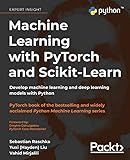
Machine Learning with PyTorch and Scikit-Learn: Develop machine learning and deep learning models with Python



Mastering PyTorch: Create and deploy deep learning models from CNNs to multimodal models, LLMs, and beyond


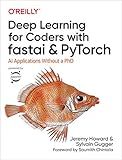
Deep Learning for Coders with Fastai and PyTorch: AI Applications Without a PhD


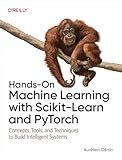
Hands-On Machine Learning with Scikit-Learn and PyTorch: Concepts, Tools, and Techniques to Build Intelligent Systems


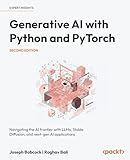
Generative AI with Python and PyTorch: Navigating the AI frontier with LLMs, Stable Diffusion, and next-gen AI applications



The Hundred-Page Language Models Book: hands-on with PyTorch (The Hundred-Page Books)


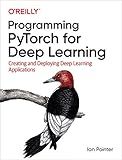
Programming PyTorch for Deep Learning: Creating and Deploying Deep Learning Applications



The StatQuest Illustrated Guide to Neural Networks and AI: With hands-on examples in PyTorch!!!


In PyTorch, iterating over layers involves accessing and performing operations on each layer within a neural network model. Here is an explanation of how to iterate over layers in PyTorch:
- Get all layers in the model: Start by obtaining all the layers present in your PyTorch model. This can be accomplished by using the parameters() or modules() function on the model. The parameters() function provides an iterator over all the trainable parameters in the model, while the modules() function returns an iterator over all the modules in the model.
- Iterate over the layers: Once you have obtained the layers, you can iterate over them using a loop, such as a for loop. This allows you to access and perform operations on each individual layer.
- Perform operations on each layer: Within the loop, you can access properties and apply operations to each layer individually. For example, you can print the layer's name, check its type, modify its parameters, or apply a specific function to the layer.
- Example code: Here is an example code snippet that demonstrates iterating over layers in PyTorch:
import torch.nn as nn
Define a sample neural network model
class MyModel(nn.Module): def __init__(self): super(MyModel, self).__init__() self.layer1 = nn.Linear(10, 5) self.layer2 = nn.Linear(5, 2)
def forward(self, x):
x = self.layer1(x)
x = self.layer2(x)
return x
Instantiate the model
model = MyModel()
Iterate over the layers
for name, layer in model.named_modules(): print(f"Layer name: {name}") print(f"Layer type: {type(layer)}") print(f"Layer parameters: {list(layer.parameters())}") print("\n")
In the above code, the named_modules() function is used to iterate over both the model and its submodules, providing the names and actual layers. Within the loop, various properties of each layer can be accessed, modified, or printed as needed.
Keep in mind that the specific operations and modifications you perform on each layer will depend on your specific use case or task. The mentioned steps outline a general approach to iterate over layers in PyTorch.
How do I iterate over each parameter of a layer in PyTorch?
To iterate over each parameter of a layer in PyTorch, you can use the .parameters() method of the layer object. Here's an example:
import torch.nn as nn
Create a layer
layer = nn.Linear(10, 5)
Iterate over each parameter of the layer
for param in layer.parameters(): print(param)
In the above code, nn.Linear(10, 5) creates a linear layer with 10 input features and 5 output features. The .parameters() method returns an iterator over the layer's parameters, which can be iterated using a for loop. Each parameter corresponds to a tensor holding learnable weights or biases of the layer.
You can access and manipulate these tensors as needed inside the loop. For example, you can print the shape of each parameter using print(param.shape).
How do I check if a layer is trainable or frozen in PyTorch?
In PyTorch, you can check if a layer is trainable or frozen by examining its requires_grad attribute. If requires_grad is set to True, the layer is trainable, otherwise it is frozen. Here's an example:
import torch.nn as nn
model = nn.Sequential( nn.Linear(10, 5), nn.ReLU(), nn.Linear(5, 1) )
Check if a layer is trainable or frozen
for name, param in model.named_parameters(): if param.requires_grad: print(f'{name} is trainable') else: print(f'{name} is frozen')
In the above example, model.named_parameters() provides an iterator over the model's named parameters along with their values. By checking the requires_grad attribute of each parameter, you can determine if a layer is trainable or frozen.
How do I access the output of each layer in PyTorch?
In PyTorch, you can access the output of each layer by defining a forward hook.
A forward hook is a function that is attached to a layer and called every time the layer's forward method is called. It takes four inputs: the module (layer) that the hook is attached to, the input to the layer's forward method, the output of the layer's forward method, and a string indicating whether the forward method was called in training or evaluation mode.
Here is an example of how to define and use a forward hook to access the output of each layer:
import torch import torch.nn as nn
Define a custom layer
class MyLayer(nn.Module): def __init__(self): super(MyLayer, self).__init__()
def forward(self, x):
# layer implementation
return x
Define a forward hook to access the output of each layer
def hook(module, input, output): print(f"Output of {module}:\n{output}")
Create an instance of the custom layer
layer = MyLayer()
Attach the forward hook to the layer
layer.register_forward_hook(hook)
Generate some random input
input = torch.randn(1, 3, 32, 32)
Pass the input through the layer
output = layer(input)
In this example, the hook function is called every time the layer's forward method is called. It prints the output of the layer to the console. By registering this hook, you can access the output of the layer for further processing.
How can I enable/disable the gradient computation for specific layers in PyTorch?
To enable/disable gradient computation for specific layers in PyTorch, you can use the requires_grad attribute of the tensor or the parameters() method of the module.
Here's an example on how to enable/disable gradient computation for specific layers:
- Enable gradient computation for all layers:
import torch.nn as nn
model = nn.Sequential( nn.Linear(10, 5), nn.ReLU(), nn.Linear(5, 2), )
Enable gradient computation for all layers
for param in model.parameters(): param.requires_grad = True
- Disable gradient computation for specific layers:
import torch.nn as nn
model = nn.Sequential( nn.Linear(10, 5), nn.ReLU(), nn.Linear(5, 2), )
Disable gradient computation for the first layer
model[0].requires_grad = False
Disable gradient computation for the ReLU activation function
model[1].requires_grad = False
In the above examples, requires_grad is set to True to enable gradient computation and False to disable it. Note that these changes must be made before passing any input through the model.
By managing the requires_grad attribute, you can control which layers' gradients are computed during the backward pass in PyTorch.
How do I check if a layer is an instance of a specific class in PyTorch?
To check if a layer is an instance of a specific class in PyTorch, you can use the isinstance() function. Here's an example:
import torch.nn as nn
Define your custom layer class
class MyLayer(nn.Module): def __init__(self): super(MyLayer, self).__init__() # Layer implementation...
Create an instance of your custom layer
layer = MyLayer()
Check if the layer is an instance of MyLayer
if isinstance(layer, MyLayer): print("The layer is an instance of MyLayer") else: print("The layer is not an instance of MyLayer")
In this example, the isinstance(layer, MyLayer) statement checks if the layer object is an instance of the MyLayer class. If it is, it will print that the layer is an instance of MyLayer, otherwise, it will print that it is not an instance of MyLayer.
What is the purpose of nn.Module in PyTorch?
The nn.Module is a base class in PyTorch that is used to define neural network models. It provides a convenient way of organizing the model's parameters, defining the forward propagation logic, and performing other common operations such as saving and loading models.
The main purpose of nn.Module is to encapsulate the trainable parameters of the model, track the computational graph, and enable automatic differentiation. By subclassing nn.Module, users can define their own models by declaring network architecture and writing a forward method that specifies how input data is processed to produce output predictions.
nn.Module also provides several useful methods and attributes to work with model parameters, such as parameters(), modules(), and state_dict(). Moreover, it allows easy integration with other PyTorch modules and utilities, enabling the use of pre-defined layers, activation functions, and loss functions in the model definition.
